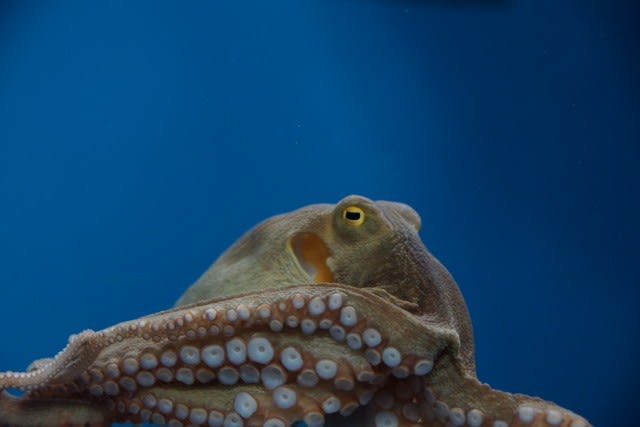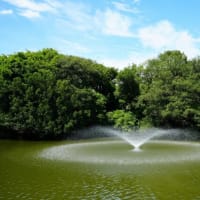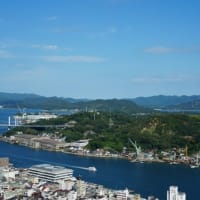The following is from a series of columns by Masayuki Takayama in the subscription-only monthly magazine Themis, which arrived at my house today.
This article also proves that he is the one and only journalist in the postwar world.
MacArthur, who pretends to be brave while being a coward, is a bastard.
He ordered that "It burns the bodies of Class A war criminals and their ashes threw into the sea!"
It was humiliating to lose to Japan.
Henry Stokes, a former correspondent for the British newspaper The Times, in his book, "The Delusion of the Victorious History of the Allied Powers," expresses his frustration that "the British Empire, which had always won for hundreds of years, was defeated by the colored Japanese" in Churchill's private letter. It was "written in an abusive language that cannot even quote. It is not difficult to imagine what kind of language he used.
Binnertz, a Dutchman expelled from the Dutch East Indies, wrote: "The Japanese are short, filthy, yellow, bent-legged apes. They give off a strong stench reminiscent of animal cages" (Rudy Kousbroek, Western Colonial Loss and Japan). Churchill probably made similar remarks to those of Binnertz.
At the bottom of his rhetoric, I think there was anger at the loss of colonies, an irreplaceable asset for European nations, and humiliation at having the pride of Britain as a great naval power torn to shreds.
The British thought they knew all about naval warfare, but they were astonished by the report of Colonel W. Pakenham, an observer at the Battle of the Sea of Japan.
The ancient form of naval warfare was to sink a ship by thrusting its bow against the side of the opponent's ship. The bow of the British battleship Mikasa also protruded toward the waterline in the style of Antonio Inoki.
Heihachiro Togo, however, did not engage in this port-and-post approach.
When an enemy ship came within range of his main guns, he would have his chief gunnery officer, Abo Kiyokazu, test fire the guns, measure the distance, and have all the ships fire at it in unison.
It led to the sinking of 12 Russian battleships, including the Oslavia and the Borodino quickly.
Admiral J. Fisher responded to Pakenham's report that "the naval battle was fought with the main guns, not the secondary guns for close combat," and built a new battleship, the Dreadnought, built around the main guns. That's a naval nation. That alone was amazing, but the British continued to make improvements and built a super-dreadnought battleship and then the super-dreadnought Prince of Wales.
The purpose was to crush the emerging naval power of Japan. He was already waiting in Singapore when he conspired with the U.S. to set a trap for Japan to attack Pearl Harbor.
The unprecedented escape of the commander-in-chief from the enemy
Japanese aircraft intercepted the Japanese navy off the coast of the French Indies in an attempt to destroy it. For the first time in the history of naval warfare, an aircraft sank an armored battleship.
Japan had rewritten the shape of naval warfare.
When a super-dreadnought was sunk, and Singapore, the keystone of colonial imperialism, was also dropped, Churchill was tempted to use a series of vulgar epithets.
With that in mind, we can well imagine the anger and humiliation of the vulgar MacArthur. This man was a coward, but he kept pretending to be a brave general. It peeled that facade away on the morning of Pearl Harbor. When he was informed that the U.S. Pacific Fleet was gone, he was distraught for half a day.
Therefore, after Pearl Harbor, 30 "heavy bombers B17" prepared to immediately destroy Japan were all destroyed by the air raid of Japanese military aircraft.
The B17 was a monster-heavy bomber that had already flown on the European front and could shoot down any new fighter aircraft Germany sent out. Of course, not a single plane was shot down. That's 30 planes.
"If the war started, Japan would have been wiped off the map in three months," said Navy Secretary Knox. The cowardly MacArthur reduced it to ashes.
In addition to that poorness, he assumed that the rescue Pacific Fleet had disappeared.
He abandoned Manila and fled to the fortress island of Corregidor, finally abandoning his officers and fleeing alone to Melbourne.
I had never heard of a commander fleeing before the enemy.
It was all the fault of the Japanese military.
MacArthur's humiliation and anger were even more significant than Churchill's.
In 1944, he was put in charge of the counter-offensive forces and attacked Manila first. Before the final battle, the Japanese handed over to the Americans 3,50 Western civilians interned at St. Thomas University.
MacArthur waited for them and ordered that Manila be reduced to ashes. He bombed the city with thousands of tons of explosives, killing 100,000 civilians.
Private retaliation for disrespectful executions
After the war, MacArthur had Lieutenant General Masaharu Homma, who had forced him to flee before the enemy, executed for his role in the made-up "Bataan Death March.
The execution was timed to coincide with General Homma's landing at Lingayen Gulf on April 3. He did not conceal the fact that it was a private reprisal.
Tomoyuki Yamashita, the commander of the Filipino garrison just before the end of the war, was charged with the "genocide of 100,000 people in Manila" after the war.
It was caused by U.S. naval artillery shooting and airstrikes but blamed General Yamashita for that responsibility.
He was sentenced to death. And he was hanged while still in prison uniform, which was not polite for a warrior.
Then came the Tokyo Trials.
It is noteworthy that General Matsui Ishine was sentenced to death for lying about the Nanking Massacre, which the U.S. and China concocted.
During World War I, there were various stories of massacres by German troops. Still, Ponsonby and others confirmed the authenticity of the stories, and all of them were investigated as fabrications, and there were no executions in retaliation.
However, Bataan, Manila, and Nanking were executed without any verification, firmly establishing the lies.
At the Tokyo Trials, the remaining Class-A war criminals, including Hideki Tojo, were sentenced to death for "crimes against peace," an illegal ex post facto law, and all seven were executed on the birthday of the Crown Prince (now His Majesty the Emperor Emeritus).
Tojo and four others were executed simultaneously, and Hiroki Hirota and three others were hanged 30 minutes later.
Like General Yamashita, it was a malicious execution that lacked any respect for the dying.
The other day, I read in the Asahi Shimbun that it had found MacArthur's order to "burn the bodies of Class A war criminals and throw their ashes into the sea."
He also ordered the B.C. class war criminals he had already executed, including Lieutenant General Honma, to "dig up their graves, burn them, and throw away their ashes.
There is a story in Chinese folklore about the tale of Goshishou.
Goshishu, whose father and brother had been killed by King Ping of Chuxia, served the king of Wu, and when the time was right, he destroyed Chuxia and flogged the tomb of King Ping 300 times.
The Japanese fought against such human waste.
Next time, we would like to study our opponent carefully.


















